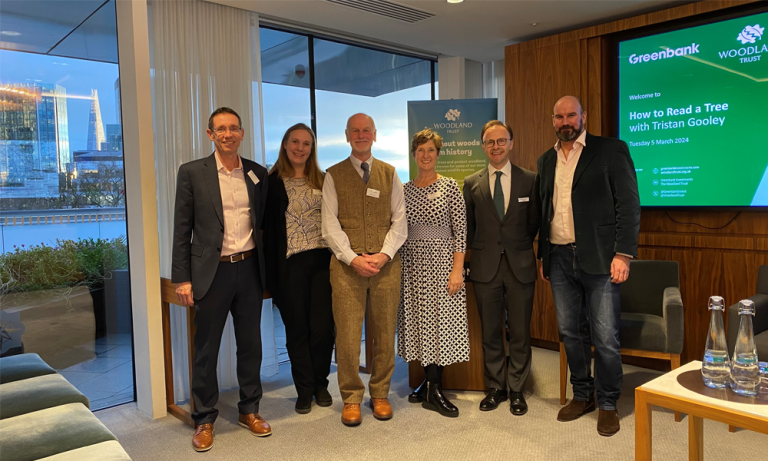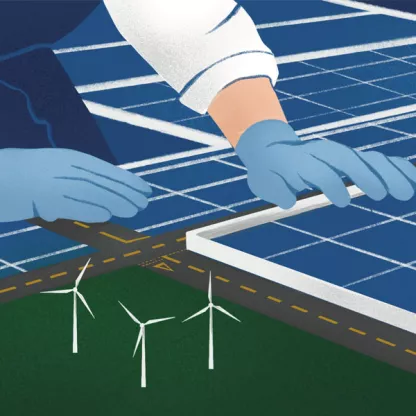Natural navigators learn to read the sun, moon, stars, weather, land, sea, plant and animals. In his latest book, How to Read a Tree, Tristan explains the simple principles that explain the shapes and patterns you can see in trees and what they mean.

An interview with the natural navigator, Tristan Gooley
Article last updated 25 March 2024.
Click to read Tristan's biography and to find out more about his latest book, How to Read a Tree.
What are the core benefits of urban woodlands to people and places and what consequences might both face if these woodlands continue to decline?
It’s widely understood how trees and woodlands work to sequester carbon and clean the air in urban environments. Positive effects on mental wellbeing are perhaps harder to quantify, but there’s plenty of evidence to support the hypothesis – hospitals, for example, have reported improved rates of patient recovery where people are convalescing close to or within sight of trees.
Urban woodlands are important because they provide us with the access and connection to trees we can use to improve our practical understanding of their appearance and functions. Maintaining these spaces and that closeness increases our capacity to notice when trees change, giving us greater scope to accurately interpret what those changes signify – something our ancestors were very good at. Losing urban woodlands risks a host of material benefits but also limits the opportunities to engage with interesting spaces.
How does ‘reading’ trees help us to understand the wider environment and gauge its wellbeing?
There’s a fascinating practical and psychological benefit to reading trees. Species evolve to understand clues and signals in their environments, though on first inspection it looks like humans trail far behind most other creatures. What we might lack in animal sense and instinct, however, is offset by the capacity of our brains to interpret landscapes in far more interesting and complex ways. Unlike animals, we can make multiple deductions from our sensorial experiences of nature and our reward for that is a sense of confidence and security. Humans thrive on puzzle solving – achieving that in nature, we feel good because we’re engaged with something that benefits us in an evolutionary sense.
Though we no longer rely on it for basic survival, reading trees is a fast and practical way to re-engage our brains with the clues in our own environments signalling change, pointing us in the right direction, or leading us to essential resources. There are indigenous people throughout the world who still source water by monitoring trees and animal activity rather than by searching for it directly.
Re-engaging with trees results in a dual win. The psychological boost we get from being able to interpret natural phenomena translates to a more refined appreciation of wider environmental functions and a clearer sense of when they might be failing and why.
"What we might lack in animal sense and instinct is offset by the capacity of our brains to interpret landscapes in far more interesting and complex ways."
How does natural navigation better connect us to nature and is there an example we could all easily apply to everyday life?
Natural navigation is a fun and accessible way to read and interpret nature that feeds our psychological need for deductive stimulation. It also poses a simple question that helps us connect with nature practically and properly engage with trees and natural clues and signals without feeling overwhelmed. Walking through a park or woodland, for example, we could use trees a dozen different ways to determine where North is. Most branches and tree growth appear on the south side of a tree because light predominantly comes from the south. Branches on the north side of a tree tend to grow vertically rather than horizontally because light sources are higher on the north side. Leaves on the north side of a broadleaf tree are bigger, darker and thinner than those on the south side.
Every part of a tree can be used as a compass in a simple navigation exercise, but it’s not important to be right first time. The point is to use simple tasks to fire up the deductive capacity of our brains and acquire practical skills that make us feel stimulated and better acquainted with nature.
"Every part of a tree can be used as a compass in a simple navigation exercise, but it’s not important to be right first time."
What can people do to continue promoting increased nature conservation?
I’m not a great believer in telling people how to behave when it comes to conservation – I generally avoid the words ‘ought’ or ‘should’ in my writing! Rather than offer rigid conservation blueprints, it’s better to help people build their own relationships through fun and stimulating activities.
My own experience bears this out. I’d been teaching people navigation skills with a pair of yew trees on a hill in the South Downs for around a decade before they were suddenly threatened by a proposed change in land use. Though the proposal was reasonably well thought through, the potential loss of the trees was badly received by the hundreds of people who’d stood beside them with me over the years, learning from their leaves and branches how to read the wider landscape.
People react strongly when things they feel close to are threatened with change or destruction and those reactions are more likely to encourage dialogue on the practical issue of conservation. For me, shouting about conservation and looming existential threats increases anxiety more than it increases meaningful action. The more we engage with our natural spaces and learn skills from them that work and excite us, the more likely we are to speak up for their preservation.
Why should we feel optimistic about the future wellbeing of Britain’s natural spaces?
When I began writing about and teaching natural navigation in 2008, few people saw a future for it and fewer still saw any value in reviving ancient skills. The financial uncertainty that followed, however, seemed to amplify changes in the way people felt about what they should be prioritising in their lives – conversations focused less on house prices and more on how we might enhance our experience of the world.
While the desire for interesting and engaging experiences isn’t restricted to nature, that focus on experience has perpetuated through the younger generation who seem more prepared to follow and invest in their passions. Another encouraging recent trend is a growing belief that no project of any size or duration can be considered good if it in any way degrades the landscape. Some people focus major efforts on individual species or locations which is great to see, but we generally seem more accepting of the idea that natural spaces provide tangible benefits worthy of our respect and attention – I don’t think that was the norm 30 years ago.
The teaching of ancient skills is still very niche, but my optimism for the future stems from how it’s transformed in my time from an oddball concept into a fun and stimulating way for people to exercise their deductive minds and experience a view of the world their ancestors once knew.
"Another encouraging recent trend is a growing belief that no project of any size or duration can be considered good if it in any way degrades the landscape."





